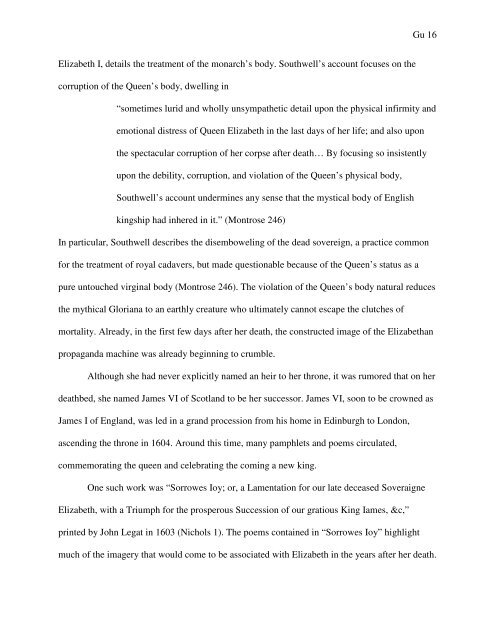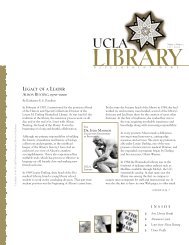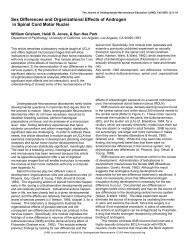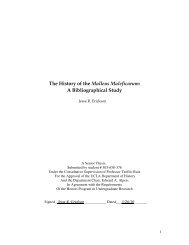Research Paper - UCLA Library
Research Paper - UCLA Library
Research Paper - UCLA Library
Create successful ePaper yourself
Turn your PDF publications into a flip-book with our unique Google optimized e-Paper software.
Elizabeth I, details the treatment of the monarch’s body. Southwell’s account focuses on the<br />
corruption of the Queen’s body, dwelling in<br />
Gu 16<br />
“sometimes lurid and wholly unsympathetic detail upon the physical infirmity and<br />
emotional distress of Queen Elizabeth in the last days of her life; and also upon<br />
the spectacular corruption of her corpse after death… By focusing so insistently<br />
upon the debility, corruption, and violation of the Queen’s physical body,<br />
Southwell’s account undermines any sense that the mystical body of English<br />
kingship had inhered in it.” (Montrose 246)<br />
In particular, Southwell describes the disemboweling of the dead sovereign, a practice common<br />
for the treatment of royal cadavers, but made questionable because of the Queen’s status as a<br />
pure untouched virginal body (Montrose 246). The violation of the Queen’s body natural reduces<br />
the mythical Gloriana to an earthly creature who ultimately cannot escape the clutches of<br />
mortality. Already, in the first few days after her death, the constructed image of the Elizabethan<br />
propaganda machine was already beginning to crumble.<br />
Although she had never explicitly named an heir to her throne, it was rumored that on her<br />
deathbed, she named James VI of Scotland to be her successor. James VI, soon to be crowned as<br />
James I of England, was led in a grand procession from his home in Edinburgh to London,<br />
ascending the throne in 1604. Around this time, many pamphlets and poems circulated,<br />
commemorating the queen and celebrating the coming a new king.<br />
One such work was “Sorrowes Ioy; or, a Lamentation for our late deceased Soveraigne<br />
Elizabeth, with a Triumph for the prosperous Succession of our gratious King Iames, &c,”<br />
printed by John Legat in 1603 (Nichols 1). The poems contained in “Sorrowes Ioy” highlight<br />
much of the imagery that would come to be associated with Elizabeth in the years after her death.











